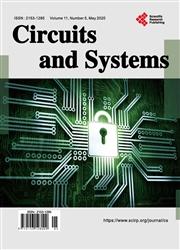Design of a Low-Cost Underwater LED Fishing Light Attractor
引用次数: 3
Abstract
Fishermen generally use light as a common way to attract fish in the fishing industry. This study aimed to design a model of an underwater fishing using Light Emitting Diode (LED) lamp which is less costful and suitable for fishermen of Tanzania. Most fishermen currently use kerosene based lamps like candela which consumes lots of energy leading to high cost in terms of money used to regenerate the energy. This running cost automatically rises up the price of fish in the market. Thus with the use of LED lamp the cost will be reduced. The findings from this study showed that the LED lamp consumes little amount of energy (energy saving) compared to candela lamp which consumes 6 liters of kerosene per 36 hours which is equivalent to three nights, while the LED lamp takes 7 batteries at once for 36 hours. The 6 liters of kerosene cost around 7 USD and that of 7 batteries cost is near 2 USD. The LED lamp can be accessed by only 15 USD the price which is nearly half the price of the candela lamp. The candela lamp in the market is sold around 31 USD. This shows that LED lamp is more efficient in terms of conserving energy and cost effective than candela lamp. It is recommended that fishermen in the fishing industry in Tanzania should employ the usage of underwater LED fishing lamps as they are energy efficient. This will help the fishermen of Tanzania to undertake the fishing activity at low cost which will result to the decrease of price of fish in the market. This shows that this LED lamp has high efficiency and effectiveness to be used by fishermen compared to traditional method used by majority of them.一种低成本的水下LED鱼灯吸引器的设计
在渔业中,渔民通常使用灯光作为吸引鱼类的常见方式。本研究旨在设计一种使用发光二极管(LED)灯的水下捕鱼模型,该灯成本较低,适合坦桑尼亚渔民。目前,大多数渔民使用像坎德拉这样的煤油灯,这种灯消耗大量能源,导致用于再生能源的资金成本很高。这种运行成本会自动抬高市场上的鱼的价格。因此,使用LED灯将降低成本。这项研究的结果表明,与坎德拉灯相比,LED灯消耗的能量很少(节能),坎德拉灯每36小时消耗6升煤油,相当于三个晚上,而LED灯在36小时内一次需要7个电池。6升煤油的价格约为7美元,7节电池的价格接近2美元。LED灯只需15美元,价格几乎是坎德拉灯价格的一半。市场上的坎德拉灯售价约为31美元。这表明LED灯在节能和成本效益方面比坎德拉灯更有效。建议坦桑尼亚渔业渔民使用水下LED捕鱼灯,因为它们是节能的。这将有助于坦桑尼亚渔民以低成本开展捕鱼活动,从而降低市场上的鱼类价格。这表明,与大多数渔民使用的传统方法相比,这种LED灯具有较高的效率和有效性,可供渔民使用。
本文章由计算机程序翻译,如有差异,请以英文原文为准。
求助全文
约1分钟内获得全文
求助全文

 求助内容:
求助内容: 应助结果提醒方式:
应助结果提醒方式:


